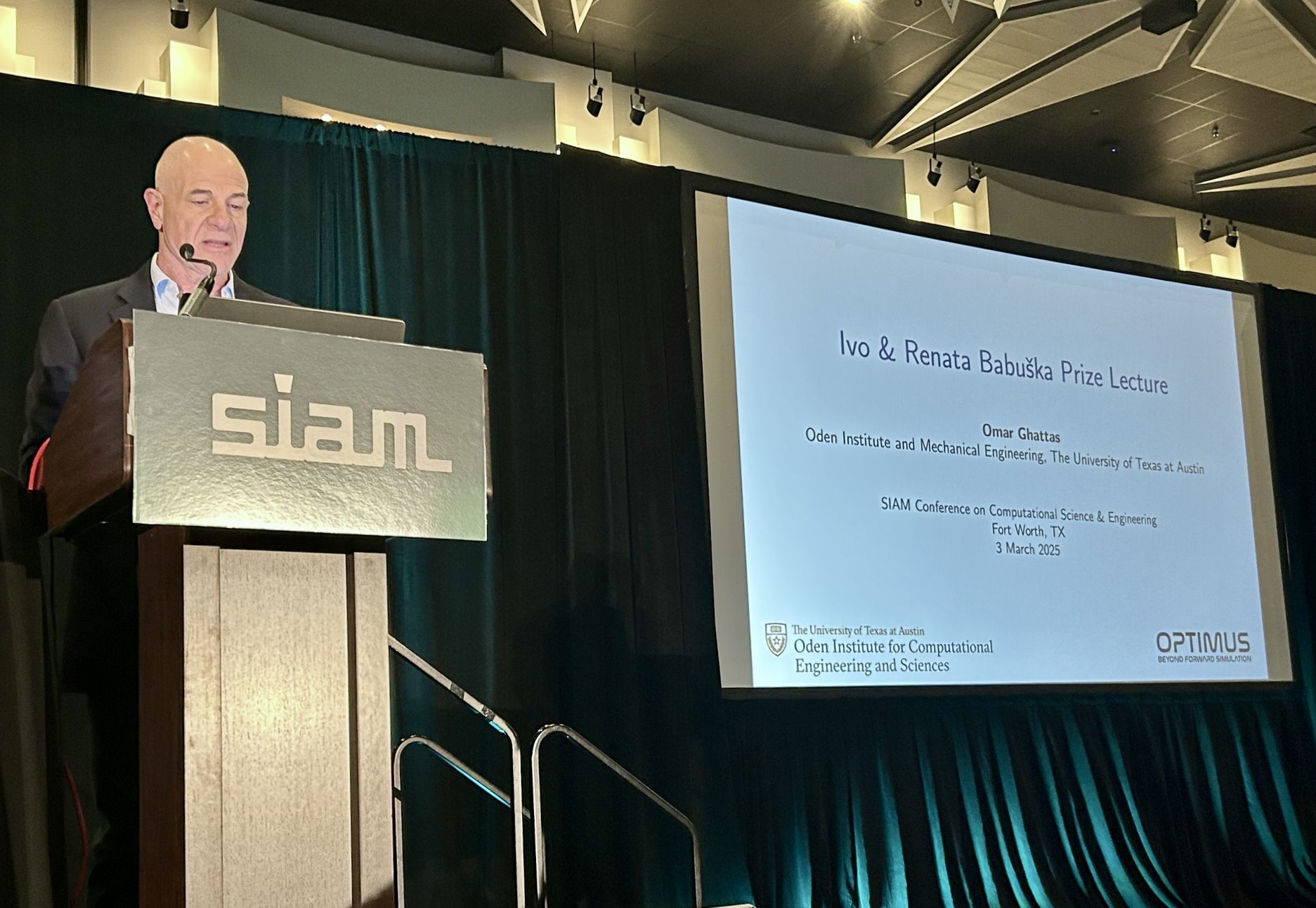Omar Ghattas, Principal Faculty at the Oden Institute for Computational Engineering and Sciences at The University of Texas at Austin, has been awarded the inaugural Ivo & Renata Babuška Prize from the Society for Industrial and Applied Mathematics (SIAM).
The prize, announced at the biennial SIAM Conference on Computational Science and Engineering (CSE), held March 3 - 7, 2025, in Fort Worth, Texas, was awarded for Ghattas’ “groundbreaking interdisciplinary contributions to the theory and algorithms of Bayesian inverse problems, and their high-impact application across the geosciences.”
Modeling complexity, scale, and formal uncertainty quantification—Ghattas’ interdisciplinary work has been game-changing with real-world applications in earthquake modeling, seismic inversion, tsunami early warning, and ice sheet modeling.
“It is a tremendous honor and thrill to have been selected for this inaugural SIAM prize. I give all the credit to the outstanding students, postdocs, and colleagues I have been fortunate enough to work with. What makes this prize particularly special is that it bears the name of my cherished long-time colleague at the Oden Institute. Ivo Babuška was an intellectual giant in the field of computational science and engineering,” said Ghattas, who is a SIAM Fellow.
Babuška was world-renowned for his work on the mathematical foundations of the finite element method, including the Ladzhenskaya-Babuška-Brezzi condition and Babuška–Lax–Milgram theorem. He championed the need for uncertainty quantification for complex models and pioneered methods for random and stochastic PDEs as well as verification and validation of computer models.
